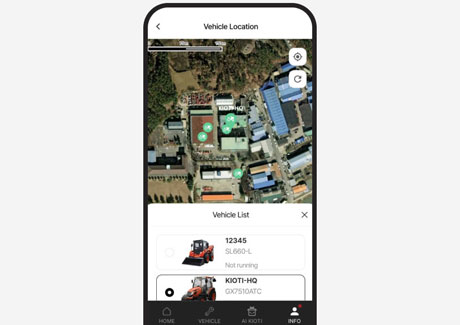Collaboration and communication in the coronavirus era

Working remotely isn’t new. But being forced into it in such widespread numbers, and so suddenly, is.
“And we were being pushed either over, or right straight through, that learning curve,” says Dr. Mark Mortensen, an associate professor of organizational behavior at INSEAD, the world’s second largest provider of executive education, with campuses in Europe, Asia, the Middle East, and North America. “But in all fairness, I have been studying remote and virtual work for almost 20 years. It’s not that we haven’t been doing virtual, what is fundamentally different is that up until now we opted in to do virtual.”
Soft skills, not software
Professor Mortensen holds a PhD in Management Science and Engineering from Stanford University, an MS from Stanford and a BA from Colby College, both in Computer Science. We spoke via Zoom from his home in Fontainebleau, France, just outside Paris.
He said when he was involved in building technology as a computer scientist, he realized one of the biggest determinants of success or failure had less to do with hardware or software and more to do with the ability of the team that was using the product to work well together. So, he changed the focus of his research and teaching to teams and collaboration.
“The terms really are not interchangeable,” said Mortensen. “When we talk about teams, we mean a group of people working interdependently to accomplish some common goal. It’s a bounded set of people, not a random group.
“The part we really care about is whether we are giving people all they need to exchange the information, share their ideas and share their effort in ways that move projects forward. And the way we do that we know is changing.”
He is still regularly conferring with companies and holding online workshops and seminars, and understands everyone is working to ensure their survival. But on the other side of this, the former faculty member at MIT Sloan School of Management said everyone is coming to the realization we are undergoing a permanent shift in the way we work.
“We are thinking about productivity, how much we know about how people are working at home, and how much we need to know. All of these things are in flux.”

Bright spots
Marion Minor, the CEO of EPG Brand Acceleration and Specialty Information, watched the initial spread of COVID with concern like other business owners and employers.
Besides safeguarding the mental and physical health of her employees, she also had to worry about how leaving the traditional office environment would impact collaboration and productivity among the writers, editors, designers and marketers responsible for 13 magazine brands. But she said by many measures productivity actually went up.
“We were already on the path towards this all-digital, all-remote work environment,” said Minor. “The global pandemic simply accelerated it.”
Professor Mortensen and his research colleagues have been identifying other bright spots as well.
“Hands down, the number one thing most people have been identifying as a positive in all of this has been having more time with family. I think this is going to be an ongoing demand from employees once this subsides. There are a lot more requests for people to work from home. That is going to be one of our challenges for employers to now incorporate that into our ‘normal’ work.”
Many company leaders and executives have indicated in surveys that hybrid models of remote work for some employees are here to stay.
In this study by McKinsey Global Institute, the authors concluded, “The virus has broken through cultural and technological barriers that prevented remote work in the past, setting in motion a structural shift in where work takes place, at least for some people.”
They analyzed its potential across more than 2,000 tasks used in some 800 occupations in eight focus countries. Considering only remote work that can be done without a loss of productivity, they found about 20%-25% of the workforces in advanced economies could work from home between three and five days a week. This represents four to five times more remote work than before the pandemic and could prompt a large change in the geography of work, as individuals and companies shift out of large cities into suburbs and small cities.
“Structured,” unstructured time
One of the things I noticed when I first began working remotely, is that I actually had more interaction with colleagues and co-workers than I did when they were right outside my office door. Like millions of others, I use Zoom, Teams, FaceTime, email, and phone calls, but I have to be intentional and deliberate about it.
“You hit the mark when you use the word intentionality,” Dr. Mortensen told me. “We have done studies dating all the way back to 2004 that show that communication actually improves, and that people have more interaction in a remote setting, than when they are co-located and working face-to-face. But you have to plan for it.”
Mortensen went on to say one of the most essential steps a manager can take is to structure ways for employees to interact socially, or have informal conversations about non work-related topics, while working remotely. He says this is true for all remote workers always, but especially vital for workers who transitioned out of the office so abruptly.
“One of the most essential steps a manager can take is to structure ways for employees to interact socially, or have informal conversations about non work-related topics, while working remotely.”
“There is tremendous value in informal communication. In normal day-to-day life when you pop into a colleague’s office, or ask a co-worker out to a quick coffee, or lunch, those informal interactions are where much of the grease for the organizational machine comes from.
“I remind organizations I work with all the time that when you go online many of the things we used to get for free we now have to pay for. What I mean by that is that when we meet face-to-face, I pick up information from you, get more of a sense of what is on your mind, how you are feeling, and so on. Now I don’t get that automatically. I have to build that into my communication. But sometimes you don’t even know the right questions to ask.”
Professor Mortensen, and many others, recommend building in “structured” unstructured time.
“So when I schedule video conferences with team members, I’ll take 10 minutes at the outset just to chitchat. Sometimes you have awkward silences, but you’ll get over it. By the second or third time you try it you will find people having exactly those kinds of random conversations they would in the office.”
The future
What does all this mean for the future?
Of course, not all workers will get to work remotely forever. An estimated 60% percent of jobs in the U.S. can’t be performed at home.
And McKinsey found during the pandemic that although some tasks can be done remotely in a crisis, they are much more effectively done in person. These activities include coaching, counseling, and providing advice and feedback; building customer and colleague relationships; bringing new employees into a company; negotiating and making critical decisions; teaching and training; and work that benefits from collaboration, such as innovation, problem-solving, and creativity.
For most companies, having employees work outside the office permanently will at the very least require the reinvention and rewriting of many processes and policies.
Professor Mortensen says one of the big questions he thinks every employer is going to wrestle with is the question of monitoring.
“When we are face-to-face managers get to physically see with their own eyes what’s going on. There are all sorts of articles and books about the value and importance of management by walking around. When that doesn’t occur, managers and business owners, and CEOs are going to have to become more comfortable letting go. It’s not about spying on people. It’s about being able to step in and help and solve problems. Right now, we lack all the information and the data that we need to do that most effectively. This will accelerate the development of new technology though. Much has changed in a short period of time, and there are many more changes ahead.”


